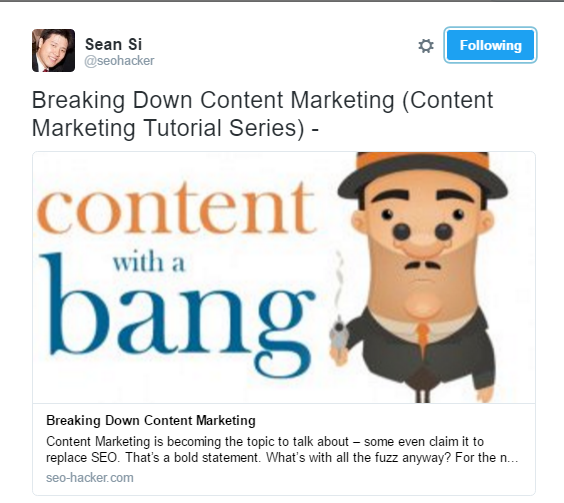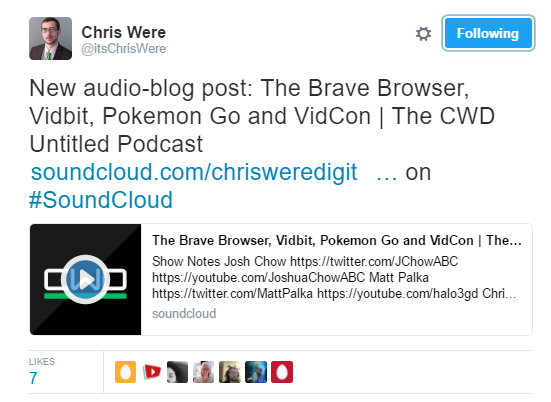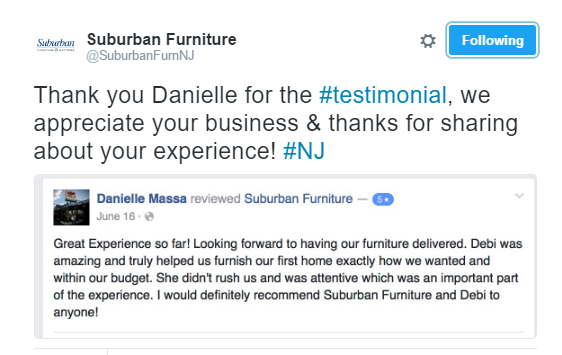11 Quick Ways to Generate Content Ideas That Will Be Sure-Shot Hits
Creating high-quality content is time consuming; Which is why content marketers everywhere are forever looking for alternatives that can produce the same result – Content curation, syndication, all concepts that you’re familiar with. Unfortunately you can’t slide with simply the alternatives, and most seasoned marketers recommend that you create at least 65% of the content you distribute.
This blog post is a set of ideas that you could use to spark that flow and create content with less effort, or as digital marketing aficionado Nick Westergaard says, “Get scrappy.”
1. String together quotes, images or videos on an interesting topic
You can curate content without seeming unoriginal. In fact, the internet is a tangled mess of information (which is why Google that much more valuable), and by consolidating, organizing and presenting all pertinent information on a specific topic, you’re being extremely helpful to your audience.
To add originality to the content you curate
a. Craft an engaging title that is descriptive of the post’s contents
b. Create value in the flow of content you weave together
c. Add observations, insights that you have gathered from processing the information
d. Highlight important points and passages
Also, always attribute your sources, they deserve credit for efforts.
To make the content you curate extra-engaging
a. Guide your readers through the piece with useful introductory bits
b. Share only content that you are certain will help them achieve a goal/improve a skill
c. Represent the content in actionable form (use active verbs and indicative tips)
d. Introduce engaging formats of content
For instance, take a look at this post that curates 5 talks by social media experts. The piece also has short introductions with clear takeaways for each talk explained in addition to embedding the video.
2. Explore question hubs and discussion forums for content ideas
The most important requirement of every piece of content that you put out is that it has got to be of use to your audience. That begets the question of how you know what your audience wants answered.
Look where your audience asks questions, and you’ll know what they want answered.
Quora is an excellent source of audience insights, and a great place to hunt for content ideas, contingent to which niche you’re a part of and if there’s enough activity related to that niche of course.
The challenge is to locate the right questions hub or discussions forum to source content ideas for your business.
You could also refer to active LinkedIn and Facebook groups, buzzing Twitter chats or use FAQ from your site or social media to create brilliant content that you can expect to become popular.
Take a look at this blog. It is inspired by a question asked during an episode of the #InfluencerChat on Twitter.
3. Break a massive concept into a series of articles for your blog
A series generates interest and builds an audience that will follow you around, at least for a while. The better you execute the series, the more strong of a following you create for it.
For instance, consider Game of Thrones, the TV series that the world is waiting on with bated breath. Although the content format is hugely diverse, a TV series is essentially a story and well-told stories have the potential to create intense anticipation.
That’s what you want to capture in your content series, break it up into “episodes” of sorts and carry your story through leaving enough unsaid at the end of each article to keep your audience hooked (couldn’t say it any other way).
Don’t lose sight of your purpose though, ensure to have valuable takeaways in each article.
How to create anticipation and grow your audience with an article series
a. Identify an interesting topic useful to a large portion of your audience
b. Segment the concept into definite and clear chapters with a goal for each
c. Write each one with examples, and direct and useful instructions
d. End each piece with a summary of what was learned and what to expect in the sequel
e. Use social media to announce the release date of each piece in advance (create anticipation)
4. Conduct a series of expert interviews on an absorbing topic
Involving experts and influencers in your content allows you to provide your audience with value beyond your expertise. Of course, it also means that you’ll have some extra help while marketing your content.
To conduct a successful interview series for your blog
a. Identify a compelling area of discussion (from question sites, discussion boards, news or FAQ)
b. Match your topic of interest to the influencers in that niche
c. Decide on the best format – email, phone call or face to face (for text, podcast or video)
d. Do your research on the influencers so you can ask the right questions
e. Ask questions that demand detailed answers and possibly anecdotes (social media adores stories)

These were questions we asked our guest experts on our last interview series.
f. Attribute your contributors properly and request them to help you gain visibility by sharing
Remember that influencers aren’t necessarily people with the most followers on social media, but experts with experience in the area of discussion and influence to drive action among people in their niche.
5. Take cues from the news and trends to decide what to talk about
My first job was in a news agency, and my mentor would chide me for entering the office without reading every other newspaper out there. It wasn’t because she wanted me to keep tabs on competition and the stories that were already out (there was that), but because she believed that that was where a whole lot of ideas were.
Knowing what’s happening around the world is necessary, no matter what your job is, but especially for social media marketers fresh social media content is absolutely vital.
People don’t want what happened 200 years back, but what’s happening now.
To create content that’s fresh and compelling
a. Use content aggregations like DrumUp to view the latest in your industry
b. List ideas that come to mind inspired by the latest happenings
c. Elaborate on how your readers can keep up with the trends
In the end, people want to know what they can do with what you have said, never present a problem in writing that you can’t solve (unless you’re writing fiction where you have the reigns to do with anything you want).
6. Crowd source answers for thought-provoking questions
Crowd sourcing is a great way to beat writers’ fatigue. If you’ve written your heart and soul out and have tons of other work on your schedule that don’t leave room for more awesome content, this is something you could do.
a. Figure out who forms your crowd (employees? Social media audience? Customers?)
b. Decide on a topic that everyone in that target group would want to talk about (choose something that is simple but meaty enough to provide real value)
c. Share your intentions clearly on social media, multiple times and when you’re certain that your audience will see it
d. Acknowledge answers and keep the enthusiasm going by checking in from time to time
e. Attribute all participants after you’ve used their answers as part of your piece
You could use interactive formats for the quotes, screen shots or tweetable inserts to boost engagement and shares. While compiling the answers ensure to add your observations and conclusion, and guide your readers through the write-up.
7. Design contests to collect content with social marketing value
Stories. Opinions. Photographs.
Or simple likes and shares.
There are several valuable effects that can come off of social media contests. However, before you begin creating that contest, there are a bunch of things you should have clarity on.
a. The type of content you wish to collect. This is in bearing with the effect (or piece) you want to produce at the end of the contest.
b. Where the contest will be held. Facebook? LinkedIn? Or both? If your answer is both, note that you’ll have one more platform to oversee and manage the contest on
c. What it will be called. A contest needs an identity for it to grow popular. Something descriptive and catchy that people will remember.
d. How people can enter. Who is the contest for? What are the requirements for an entry? The clearer you are here, the easier your job when judging the contest.
e. The rules and the parameters that entries will be judged on. Unless you have rules, controlling the outcome or the entries will be hard. Again, clearer is better.
f. A timeline. Without a definite time interval, your contest won’t convey urgency and excitement. Announce start and end dates. Decide on dates to begin promotions, and announce the winners.
g. Prizes. Make sure it is something that your audience wants and is incentive enough for them to participate.
8. Translate old content into fresh and interactive formats
Why create content when you can re-purpose already existing content? It not only saves you time, but also helps you reach out to new and untapped audiences (say you converted a blog post to a podcast, you’d reach audiences who prefer audio over text and visuals).
Save time managing your social media accounts
Are you still managing your social media accounts directly from Facebook/Twitter/LinkedIn? Make your life easier by managing all your social media in one place, schedule posts, repeat posts, curate content and more. Try DrumUp now, it's free, forever.
10 fun ways to reuse old content
a. Turn a common themed series of blog posts into an e-book
b. Covert tips from different articles into comprehensive cheat sheets
c. Recreate ideas with visuals or infographics (Use intuitive online tools to make the work easy)
d. Create a podcast from blog content
e. Translate blog sections into slides for slide shares
f. Collect expert quotes from your blog posts for a quote series
g. Type quotes on simple and engaging backgrounds to make quote overlays
h. Round up some old social media posts that did well and re-share them with new titles
i. Recreate blog content by discussing it in a webinar
j. Use old FAQs for QnAs or answer them yourself on a short blog post
9. Revisit your testimonials for compelling social media content
Testimonials add value to your social presence and help back up your business claims.
Although every business has its happy customers, few of them intentionally collect and put testimonials to best use.
In fact, while most customers are happy, only a fraction of them take time to write testimonials.
5 ways to generate more customer testimonials
a. Include review and comment forms on your website
b. Request walk-in customers to check in, review and rate your business on Facebook
c. If you’re a single run business, ask customers for LinkedIn recommendations
d. Post product or service sale follow up with review calls
e. Check in with your customers once every while via email and request them to write reviews
You could also create accounts on review sites like G2Crowd and Cnet.
10. Create content to convey what you’ve learned most recently
Content marketing is a strategy that does best when it evolves with you and your business. While you can write multiple blog posts reiterating the same points in new ways, it is important to remember that there’s somebody reading them on the other end.
If you looked at content as a means to building a relationship over time, what you write about should develop just the same.
Ponder about 10 things you’ve learned about a concept in the last month, and quickly turn that into a blog post, pod cast or video.
This strategy is also relatively easy to implement, because you’re constantly learning things and that makes for a lot of actually valuable material.
You could also add how you came about those realizations and make the story more engaging.
11. Discuss ideas that you’re passionate about
Finally, write what you think about most. It’s easier, quicker and provides more value to your readers.
When you’re passionate about an idea, you’re more likely to understand it and discover new ideas that people can use to get better at it.
If you’re ardently following a topic, you’re also more equipped to discuss the details and include everything that’s important.
So when you get the chance to, choose to write on what you’re most passionate about.
What inspires your writing? How do you discover ideas for your content? Leave a comment and I’ll make sure to include your inputs on this post.













